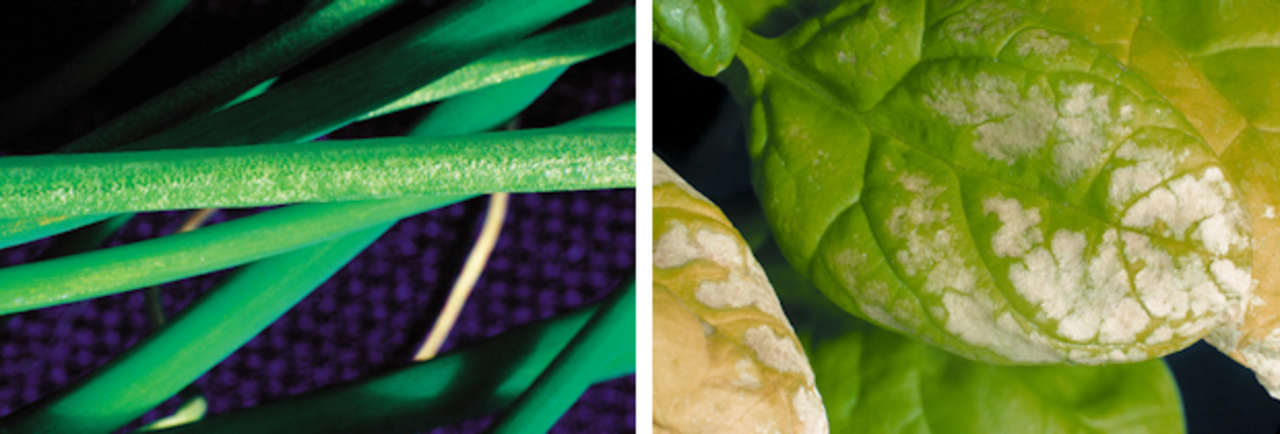Project
National Focal Centre of the UNECE ICP Vegetation

National Focal Centre of the UNECE International Cooperative Programme on the Effects of Air Pollutants on Vegetation (ICP Vegetation)
The ICP Vegetation was established in the late 1980s under the United Nation Economic Commission for Europe (UNECE) Convention on Long-range Transboundary Air Pollution (CLRTAP).The ICP Vegetation is an international research programme investigating the impacts of air pollutants on crops and (semi-)natural vegetation. The Thünen Institute of Biodiversity contributes to the programme and co-ordinates the German activities as a National Focal Centre.
Background and Objective
The programme focuses on the following air pollution problems: impacts of ozone pollution on vegetation and the atmospheric deposition of heavy metals and nitrogen to vegetation. In addition, the ICP Vegetation is taking into consideration impacts of pollutant mixtures (e.g. ozone and nitrogen), consequences for biodiversity and the modifying influence of climate change on the impacts of air pollutants on vegetation. The results of studies conducted by the ICP Vegetation are used in assessments of the current, and predictions of the future, state of the environment.
Approach
Co-ordinated experiments to determine the effects of ozone, heavy metals and N deposition on crops and non-wood vegetation in Europe in order to develop critical levels for air pollutants. Validation of the critical levels. Contribution to Thematic reports e.g. on the impact of ozone pollution on food security, on ecosystem services and biodiversity.
Results
There is continuing evidence that ambient levels of ozone significantly reduce the biomass of sensitive species at several sites in Europe. Several important crops and species of the natural vegation develop ozone injury. The currently established critical level for ozone for crops and semi-natural vegetation is regularly exceeded in many parts of Europe.
Duration
Permanent task 1.2001 - 4.2023
More Information
Project status:
finished
Publications
- 0
Strich S, Fischer U, Hoffmann A, Brüggerhoff S, Simon S, Bender J, Weigel H-J, Beudert B, Schulte-Bisping H, Dieffenbach-Fries H, Nagel H-D, Scheuschner T, Geupel M, Mücke H-G (2014) Genug getan für Mensch und Umwelt? : Wirkungsforschung unter der Genfer Luftreinhaltekonvention. Dessau: Umweltbundesamt, 59 p
- 1
Mills G, Wagg S, Harmens H, Bender J, Bergmann E (2013) Effects of ozone on ecological processes and supporting ecosystem services. In: Mills G, Wagg S, Harmens H (eds) Ozone pollution : impacts on ecosystem services and biodiversity ; Report prepared by the ICP Vegetation ; April 2013. Bangor: Centre for Ecology and Hydrology, pp 17-24
- 2
Mills G, Bender J, Bergmann E, Gonzalez-Fernandez I, Gerosa G, Bermejo V, Marzuoli R, Calvete-Sogo H, Finco A, Garcia-Gomez H, Alonso R (2013) Impacts of ozone on biodiversity. In: Mills G, Wagg S, Harmens H (eds) Ozone pollution : impacts on ecosystem services and biodiversity ; Report prepared by the ICP Vegetation ; April 2013. Bangor: Centre for Ecology and Hydrology, pp 31-42
- 3
Mills G, Wagg S, Harmens H, Jones L, Simpson D, Büker P, Emberson L, Power SA,, Sitch S, Bergmann E, Bender J (2013) Impacts of ozone on regulating services. In: Mills G, Wagg S, Harmens H (eds) Ozone pollution : impacts on ecosystem services and biodiversity ; Report prepared by the ICP Vegetation ; April 2013. Bangor: Centre for Ecology and Hydrology, pp 43-52
- 4
Grünhage L, Pleijel H, Mills G, Bender J, Danielsson H, Lehmann Y, Castell JF, Betheno O (2012) Updated stomatal flux and flux-effect models for wheat for quantifying effects of ozone on grain yield, grain mass and protein yield. Environ Pollut 165:147-157, DOI:10.1016/j.envpol.2012.02.026
- 5
Grünhage L, Bender J, Jäger H-J, Matyssek R, Weigel H-J (2011) Beurteilungswerte für Ozon zum Schutz der Vegetation. Gefahrstoffe Reinhaltung Luft 71(3):79-89

![[Translate to English:] [Translate to English:]](/media/_processed_/e/3/csm_Demetra2_c8a192c0f8.jpg)
![[Translate to English:] [Translate to English:]](/media/_processed_/e/2/csm_Demetra1_Panorama_8557ee3b13.jpg)





